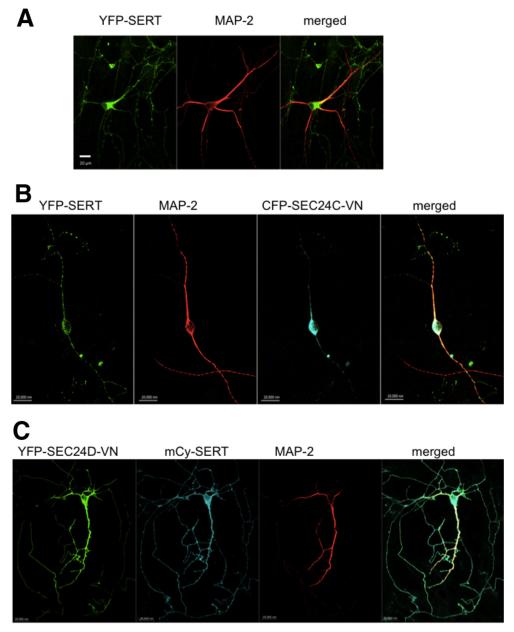Figure 5.
Cotransfection of dominant-negative SEC24C (SEC24C-VN), but not of SEC24D (SEC24D-VN), reduces axonal targeting of YFP–SERT. Rat dorsal raphe neurons were transfected with plasmids encoding YFP-tagged SERT alone (A), YFP-tagged SERT and CFP–SEC24C–VN (ratio of 1:5; B), or mCherry-tagged SERT (mCy-SERT) and YFP–SEC24D–VN (ratio of 1:5; C) using Lipofectamine2000. After 48 h, the neurons were fixed and stained for MAP-2. MAP-2 staining was detected using Alexa Fluor 568- or Alexa Fluor 633-conjugated secondary antibodies. Images were captured by confocal microscopy. During coexpression of CFP–SEC24C–VN, YFP-tagged SERT was confined to the MAP-2-positive compartment in 18 of 21 examined neurons; in the presence of dominant-negative SEC24D, mCherry-tagged SERT reached the MAP-2-negative compartment in 16 of 18 examined neurons. Data are from four independent experiments (i.e., 4 individual preparations of rat dorsal raphe neurons that were independently transfected in parallel with a plasmid coding for a tagged version of SERT and plasmids encoding CFP–SEC24C–VN or YFP–SEC24D–VN). Scale bars, 20 μm.

